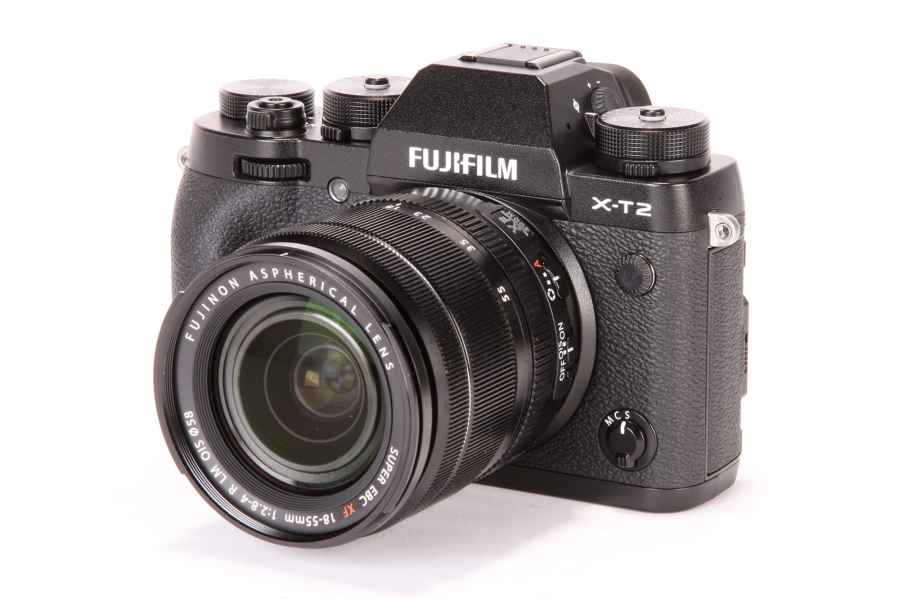Fujifilm X-T2: Introduction
At a glance:
- 24.3-million-pixel APS-C X-Trans CMOS III
- ISO 200-12,800 (100-51,200 extended)
- 325-point or 91-point hybrid AF
- Up to 14fps continuous shooting
- Dual SD slots
- 4K video
- £1,399 (body only)
Ever since Fujifilm announced their first model in the X-series in 2011, the camera system has been evolving at quite a pace. The number of interchangeable lens cameras in the X-series now stands at eight models, and there’s a healthy range of 19 premium XF lenses to choose from – a far cry from the three optics that were initially available with the release of the X-Pro1. Today, it’s the X-Pro2 that claims the title of being the flagship model in the line-up; however it’s the introduction of the Fujifilm X-T2 that seems to have generated the most interest among admirers and users of the X-series.
Unlike it’s digital rangefinder-style sister models, the X-T2 is more in keeping with the shape and style of a conventional DSLR, and it’s the blend of a beautifully sculpted handgrip, centrally positioned electronic viewfinder and classic arrangement of buttons and dials that will make DSLR users feel right at home. In the same way as the X-T1 inherited technology from the X-Pro1, we were always expecting the X-T2 to embrace some of the excellent features and functionality from the X-Pro2 to ensure it goes one better than the company’s first attempt at an SLR-shaped model. The time has come to find out if it lives up to all the hype.
Fujifilm X-T2: Features
The design doesn’t seem radically different from the X-T1, but there are many updates and refinements to get excited about. Look beyond its hardwearing magnesium-alloy chassis, and you’ll soon realise there’s a lot more than first meets the eye. As we predicted, the X-T2 is equipped with the same 24.3-million-pixel X-Trans CMOS III sensor and X-Processor Pro as the X-Pro2. This combination provides a sensitivity range that covers ISO 200-12,800 (expandable to ISO 100-51,200). Unlike the X-T1, which regrettably didn’t allow users to shoot in raw at ISO 100, 12,800 or 25,600, the X-T2 doesn’t turn off raw image recording when you shoot in its extended settings.
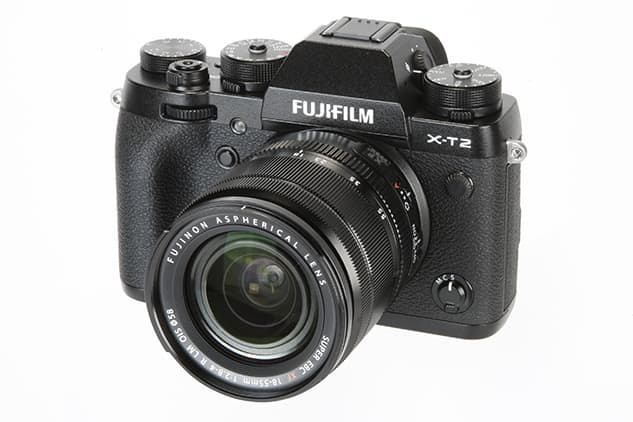
It may look little different to the X-T1 in terms of its design, but the X-T2 is fractionally larger
The X-T1 was no slouch when it came to continuous shooting, but the pairing of the X-T2’s new sensor and processor presents numerous speed benefits. Not only can it shoot at up to 8fps, with a buffer of 27 raw files or 73 JPEGs, it’s possible to increase the top-end speed by attaching a new vertical booster grip. With the camera set to its performance-enhancing boost mode, the continuous shooting speed soars to 11fps using the mechanical shutter, or a blazing 14fps using the X-T2’s electronic shutter. Entering live-view mode sees the frame rate drop to a slower but still respectable 5fps, while the startup time and shutter lag have been reduced to 0.3secs and 0.045sec, respectively. As we’ve seen on previous X-Series models, there’s a mechanical focal plane shutter with a 1/8,000sec limit and the option to extend the fastest speed to 1/32,000sec by employing the silent electronic shutter.

Fujifilm has created a vertical power booster grip (VPB-XT2) specially for the camera. It accommodates two batteries and allows you to keep the camera’s battery inserted, offering the power of three batteries in total. It comes with an AC power adapter (AC-9VS) to charge the batteries whilst they’re inserted
The viewfinder is similar to that in the X-T1. It uses a 2.36-million-dot OLED display with 0.77x magnification and 100% coverage, but again improvements have been made. It has claimed to offer a stop better image quality in low light and the EVF refresh rate can be increased from 60fps to 100fps in the camera’s boost mode. Selecting the faster of the two refresh rates does come with one compromise – it consumes more power.
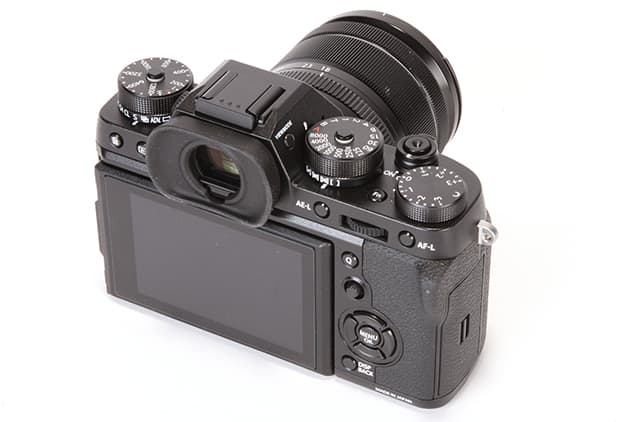
There’s a new rubberised eyecup for increased comfort when the viewfinder is raised to your eye
The display lag time of the EVF now stands at just 0.005secs. With reduced blackout time (0.13secs that reduces to 0.114secs with the power booster) and improved sensor readout and processing speeds, the X-T2 can now take up to five autofocus readings between frames during continuous shooting to improve the hit-rate of sharp shots when faced with shooting the fastest of subjects. To put this in perspective, the X-T1 previously only managed one autofocus reading between frames.
This leads us nicely onto the X-T2’s hybrid autofocus system, which features a central, square phase-detection region covering half of the frame width and three quarters of its height. Contrast-detection points are employed outside this area, and users are given the choice of either a 91-point AF array, which splits the frame into a 7×13 grid, or there’s a 325-point layout consisting of a 13×13 central grid of phase-detection points with a 6×13 grid of contrast-detect points either side. As before, single and continuous AF modes are selected from the front of the body, and there are five new autofocus case modes similar to those you get on Canon DSLRs. These are located from the AF-C custom settings in the main menu. By switching the camera from Normal to Boost mode (formerly known as high-performance mode) the AF acquisition speed improves by 0.02sec from 0.08sec to 0.06sec.
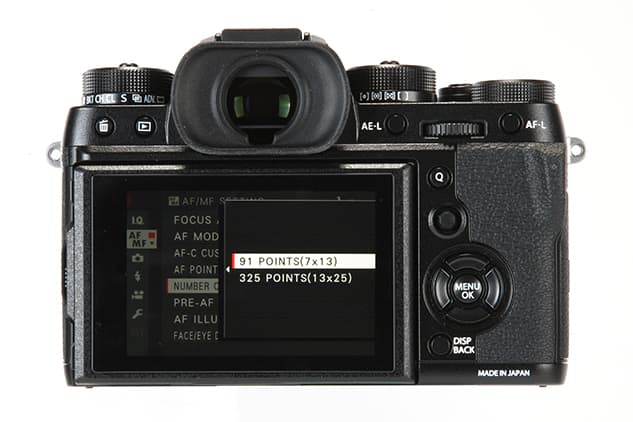
There’s no shortage of autofocus points to choose from with a 91-point or 325-point arrangement
The big news at the rear of the body is the X-T2’s tilting screen mechanism. Unlike the X-T1’s display that can only tilt up and down, the X-T2 adds an additional hinge on the right edge, which when released using a sliding catch on the opposite side allows users to tilt the screen 60 degrees upwards. As well as being able to shoot at a low level and at an arms length above crowds in the landscape format, the X-T2 now lets you do the same in the portrait format. It’s an ingenious design that has been executed superbly. As for the specs of the screen, this remains unchanged to that in the X-T1. It measures 3inches in size, has a 3:2 aspect ratio and 1.04-million-dot resolution compared to the 1.62-million-dot screen on the X-Pro2.
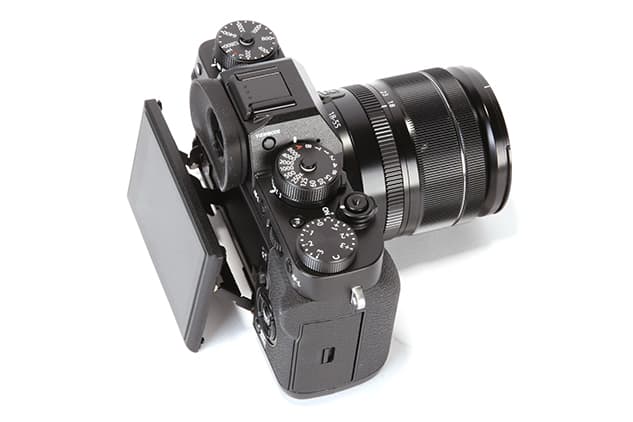
The rear screen feels secure and robust when it’s pulled out and tilted away from the body
Elsewhere, the X-T2 receives an improved graphical user interface and inherits the beautiful Arcos black & white simulation modes we loved so much on the X-Pro2. And, it’s not just in the area of stills where the X-T2 improves either. It becomes the first Fuji X-series model to sport 4K UHD video recording (3,840×2,160 pixels) at 30, 25 or 24fps for up to 10 minutes without the vertical booster grip, and 29min 59secs with it attached. Full HD (1,920×1,080) at up to 60fps is also on offer using the full width of the sensor, with the bit rate for 4K and full HD standing at 100Mbps. It’s good to see the X-T2 adds a standard 3.5mm stereo microphone input at the side, and there’s a new flat F-Log profile that videographers will want to explore when grading in post-production.
Fujifilm X-T2: AF-C Custom Settings
We were impressed by the X-Pro2’s ability to focus faster and more accurately than any other X-Series model we had tested before. With the X-T2, Fujifilm has gone one-step better to ensure it satisfies action photographers who demand that their camera is capable of capturing the fastest of subjects sharp at any split second. For tracking focus on moving subjects, the X-T2 introduces five presets in the AF-C custom settings. These can be used to fine tune how the camera reacts to the way in which the subject moves within the frame, how fast the subject moves and where in the frame the camera prioritises focus. They are purposefully designed to enable the AF to perform at its best in a host of different circumstances.
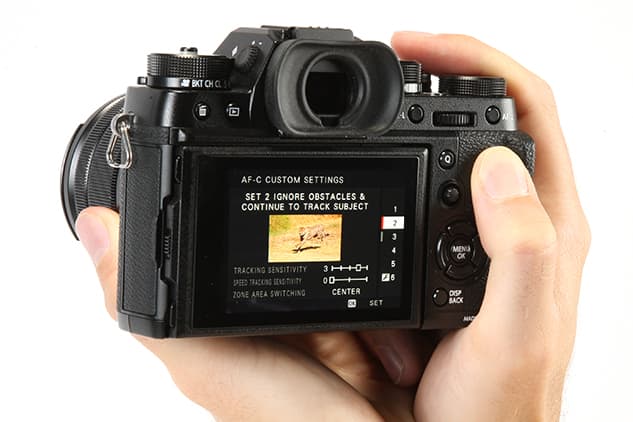
Users will find the new AF-C custom settings from the AF/MF setting in the main menu
While Set 1 is the standard multipurpose mode that’s used by default when there is no specific AF-C custom setting selected, Set 2 is designed to ignore obstacles that come between a subject that’s in the process of being tracked. Set 3 is proposed for focusing on subjects that accelerate or decelerate toward the camera, while Set 4 should be used for erratic subjects that suddenly enter in the frame. Set 5 is intended for obtaining optimum settings for accurate subject tracking, and Set 6 is a custom setting that puts manual control in the hands of users. Three factors: tracking sensitivity, speed-tracking sensitivity and zone area switching can all be adjusted to personal preference using the front and rear scroll dials.
Fujifilm X-T2: Build & Handling
There was a lot to like about the X-T1’s build quality. It demonstrated that it was strong enough to survive heavy day-to-day use, and the same can be said of the X-T2. Pick it up and you instantly get the impression it’s built to last. And with no fewer than 63 weather seals around the body it reassures you that you can keep shooting in inclement conditions and not let the weather be the judge of when you stop. During my testing the body got a soaking in a torrential rain shower, but didn’t suffer from water ingress or any operational issues. That’s not to say you shouldn’t forget about taking precautionary measures to prevent any long-term damage of course.
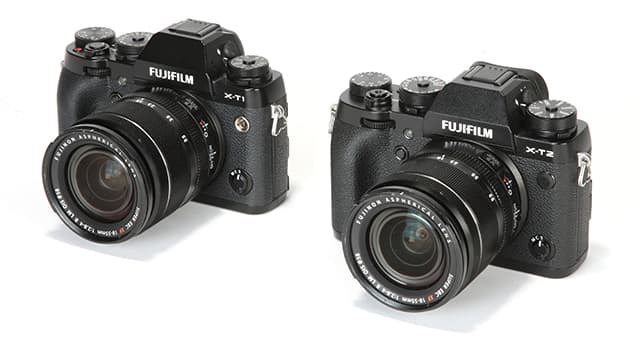
This side-by-side image shows the similarities between the X-T1 (left) and the X-T2 (right)
Although there was nothing glaringly wrong with the X-T1’s ergonomics, changes have been made to make it an even more intuitive and enjoyable camera to operate. The new AF point toggle selector it inherits from the X-Pro2 is a prime example. It saves you shifting the AF point using the four-way controller. It’s great for nudging the AF point quickly and highlights the current position of your AF point with a single press or instantly repositions the AF point back to the centre with a double press. The buttons at the rear feel different to the X-T1’s too – they’re slightly softer when pressed and are well damped.

The vertical power booster provides better purchase of the grip and more to wrap your hand around. It also transforms the shooting experience when the camera is used in the portrait orientation
Those with an eye for detail will notice that the small movie-record button on the top plate has been removed. Users will now find movie mode added to the drive-mode settings beneath the ISO dial, and it’s the shutter button that’s used to commence and end a recording. This itself has changed slightly and not only does it now sit higher on the top plate like the other three dials, it’s threaded so that it can accept the screw-in type of cable release. Below the shutter speed dial are four metering modes (Multi, Spot, Average and Center Weighted), but I did find it rather difficult to get enough of my index finger to rotate it when it was set to average or spot. The same can be said for the drive-mode switch, which has the same design and could be made easier to rotate from its panorama setting.
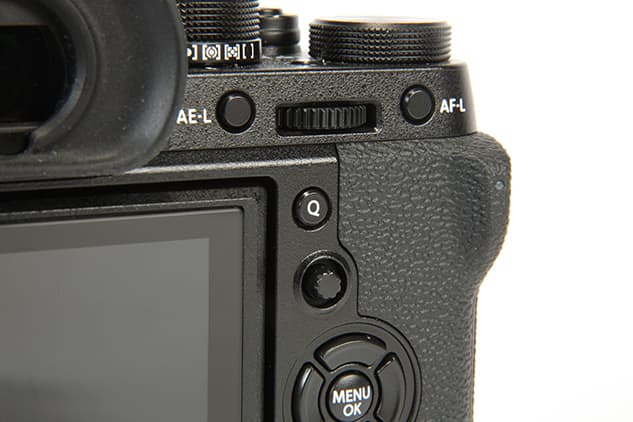
The X-T2 inherits the superb AF point toggle selector from the X-Pro2. It’s in easy reach of the thumb and is used to nudge the AF point around the frame. The Quick menu button is found directly above
The level of customisation on the X-T2 is sublime. Head into the setup menu and enter the button/dial settings and you will be able to assign different tasks to one of the six customizable function buttons around the body. In addition, it’s possible to assign new roles to the rear AE-L and AF-L buttons. In use, I found myself assigning AF-ON to the AE-L button at the rear of the camera for back-button focusing and set wireless communication to the Fn1 button on the top plate to initiate a faster Wi-fi connection, with my mobile devices running the Fujifilm camera remote app.
In similar fashion to the X-Pro2, the X-T2 benefits from dual card slots at the side behind a larger weather-sealed door with a catch to prevent it from opening unexpectedly. It supports the high-speed USH-II standard, and as well as being able to backup both cards simultaneously, you can set the camera to switch to the second card when the first is full, record raw files to one and JPEGs to the other, and specify which you’d prefer to use for recording movie footage. Another minor alternation involves the exposure-compensation dial that now has a ‘C’ setting. This setting gives users the opportunity to dial in up to +/-5EV using the front command dial and check what it’s set to via a small exposure scale that’s presented on the left edge of the screen/EVF. Turning the camera upside down also reveals the tripod thread is now in line with the camera’s optical axis where it was previously offset on the X-T1.
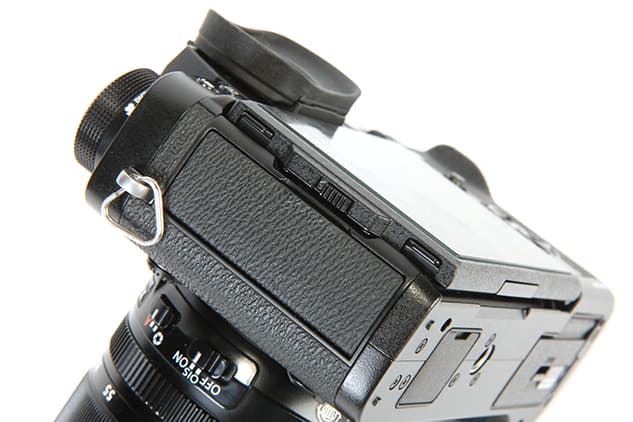
To tilt the screen for vertical shooting users are required to flick a small release catch at the side
The X-T2 is fractionally larger and heavier than the X-T1, but when you shut your eyes and pick up one and then the other you really can’t tell the difference. The handgrip fits the average-sized hand very well, and most importantly, it’s a camera that’s extremely comfortable to hold over prolonged spells. While the feel of it in the hand can’t be faulted, the only thing about the camera I’d change if given the option would be the way ISO sensitivity is controlled from the top plate ISO dial.

As well as having control of ISO via the top plate dial, we’d like to be able to override it and take control using a function button, or alternatively access it via the Quick menu
In hindsight, had Fujifilm introduced a ‘Q’ setting or such to the ISO dial, users could, if they wanted, override the top-plate dial and access ISO via the quick menu or assign it to a function button. This would get around the issue of pulling your hand away from supporting a heavy lens, which I found rather awkward at times with large zooms such as the Fujinon XF 100-400mm f/4.5-5.6 R LM OIS WR.
Fujifilm X-T2: Performance
A lot of the hype has centered around the speed of the X-T2’s autofocus, which for a camera that’s designed to appeal to a wide range of users, including serious wildlife, action and sports photographers, has to be excellent if it’s going to win over those looking to make the switch from DSLR to mirrorless. Eighteen months after the X-T1 first hit the market, Fujifilm issued a firmware update that was designed to improve AF response when tracking moving subjects. However it never really cut the mustard with photographers who would regularly shoot the fastest of subjects. Given the choice of an X-T1 or a similarly priced DSLR to shoot action or sport and I’d choose the latter every time. It was when I used the X-Pro2 alongside an X-T1 at a motorsport event earlier this year, that it became obvious how far the speed, accuracy and response of autofocus on Fujifilm’s latest models has come. The X-Pro2 made the X-T1 feel slow and lethargic by comparison, and I left the track that day knowing if the replacement to the X-T1 could focus anywhere as near as fast as the X-Pro2, Fujifilm would have a very serious camera on their hands.
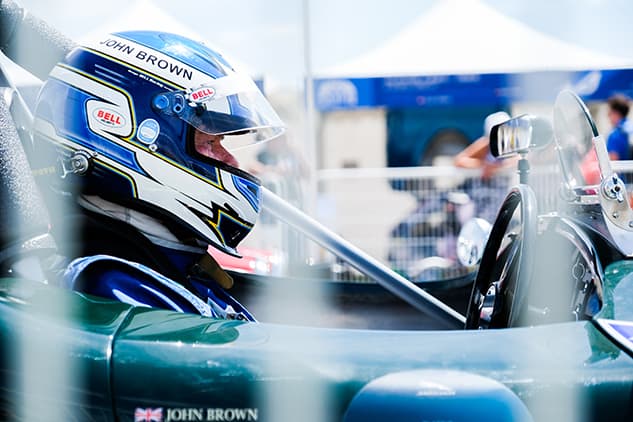
The X-T2 was put through its paces at LeMans Classic
The first opportunity I had to put the X-T2 through its paces was at a motorsport event in LeMans, France, where within the space of a few minutes and a few bursts at 11fps using the mechanical shutter with the power grip attached, I knew I was holding onto a seriously fast camera. My main concern was whether the autofocus could keep up with cars approaching the camera at speeds of approximately 100mph, but with continuous autofocus and Zone AF mode setup it put in an outstanding performance. Out of 19 frames in a burst at 11fps, no more than 3-4 turned out to be unsharp and unusable. I repeated this test multiple times with the success rate of sharp shots in each burst averaging at 79%.
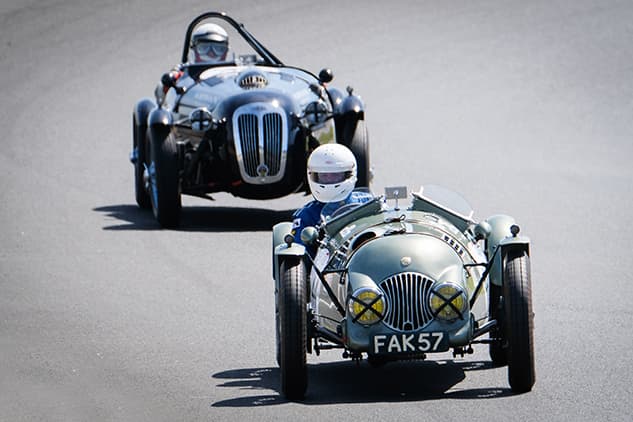
The X-T2’s continuous autofocus performance is incredibly fast. It has no difficulty keeping up with high-speed subjects and works particularly well in combination with Zone AF for motorsport
Further testing of the AF speed was conducted close to the high-speed 1 (HS1) rail link where Eurostar trains passed the camera at 186mph. Here Set 2 within the AF-C custom settings was used to ensure the autofocus system ignored the masts holding up the catenary wires, and this is just one example of where the new AF-C case settings were used. The X-T2’s blisteringly quick acquisition speed made the X-T1 feel incredibly sluggish and outdated when a series of comparison tests were made using the same lens. Compared to the occasional frame or two I managed to capture pin-sharp on the X-T1, the X-T2 made much lighter work of the situation and delivered a much higher success rate of sharp shots with the power adapter attached and set to boost. The giant leap the X-T2 makes from the X-T1 in terms of its autofocus speed is a real eye opener, and it’s great to finally report that it feels like a match for its DSLR competition.

The X-T2’s tilting screen is one of the best we’ve. It’s a godsend for low and high-angle shots
Loaded with a Lexar Professional 633x SDHC card, the X-T2 managed to shoot 24 Raw files at 8fps in Normal mode without the power booster attached, before the buffer reached its capacity. Adding the power booster and repeating the test at 11fps in Boost mode revealed the X-T2 could shoot 23 raw files before the buffer kicked in and prevented more being taken. With the X-T2’s electronic shutter switched on and the power booster attached, I managed to shoot the same number of raw files at 14fps. Shooting exclusively in the JPEG format sees the X-T2 reach its claimed 73 frames at 8fps without the power booster. With the booster added the X-T2 managed 66 JPEGs at 11fps and 42 at 14fps set to its boost mode before showing signs of slowing.

The vertical power booster grip showing off the dual bays ready to accept two NP-W126S batteries
There’s a lot more besides the autofocus and buffer performance to report on. The tried-and-tested TTL 256-zone metering system rarely skips a beat and produces accurate exposures that rarely require more than 0.7EV to be applied unless you’d like to bracket more widely for a scene. The colours captured by the sensor, both in JPEG and raw file formats, are resolved in typical Fujifilm fashion. You get faithful results set to its Standard/Provia mode, but can give colours even more punch by exploring the full suite of film-simulation modes straight from the quick menu. You can generally rely on the white balance system to produce natural colour balance, but there is the option to refine the white balance shift, adjust the colour temperature (2,500k-10,000k) as well as setup and save three custom settings.

The X-T2 produces rich, vibrant and punchy colours straight out of the camera
A feature that will prove popular among those who don’t want to interfere or distract their subjects is the X-T2’s silent shooting mode. With the electronic shutter activated, you’ll be able to shoot inconspicuously without a trace of sound being made when the shutter is fired. Better still, you can assign a function button to the shutter type to toggle through the settings rather than trawl through the main menu.
Anyone coming from an X-T1 will notice the overhauled menu interface and icons that replace the previously numbered set-up menus. The My Menu setting that gives users the choice of customising their most-used menu settings into one group is an excellent idea – just be warned the camera returns to the My Menu setting every time the Menu/OK button is used unless it’s kept completely clear.
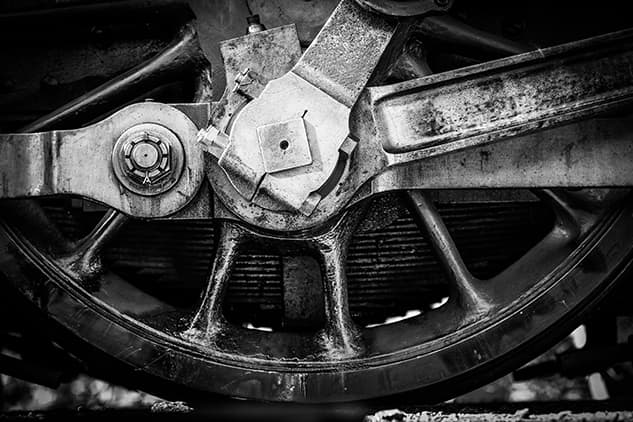
Another example of where the tilting screen was put to good use to compose a low angle shot from the same level as railway tracks
The combination of electronic viewfinder and one of the best tilting screens we’ve ever used makes the X-T2 a very enjoyable camera to use when composing images. For general shooting I found myself framing up via the viewfinder, but the tilt-screen is a godsend for low- and high-angle shots. It prevented me having to crawl around in the dirt on more than one occasion, and it just seems absurd that no other manufacturer has come up with this design for a screen before now.

The vertical power grip features a input for charging as well as a headphone port for monitoring audio
The X-T2 has clearly advanced a long way in terms of performance, but also holds onto characteristics, such as its beautiful colour rendition, that made the X-T1 so popular. The only caveat is that the best performance does come at a price. Add the power booster grip and a couple of extra NP-W126S batteries added to your basket, and you’ll quickly be looking at an extra £420 to pay on top of the £1,399 body only price. But with such an array of extra advantages, not forgetting the way it improves handling in the portrait orientation, it does manage to justify its price. We can see it being a popular accessory that’ll need to be churned out as fast as the cameras if Fujifilm is to keep up with demand.
To learn about the hidden features on the Fujifilm X-T2, we recommend taking a look at our 11 things you didn’t know about the Fujifilm X-T2 article where we explain how to inspect the level of sharpness at the point of focus with a single click and much, much more.
Fujifilm X-T2 : Dynamic range, resolution and noise
With the same sensor and processor combination as the X-Pro2, we expected the X-T2 to produce a comparable set of lab results to its sister rangefinder model, which it does. Making the jump to a 24-million-pixel APS-C X-Trans CMOS III sensor will benefit those who like to preserve a higher level of detail when cropping into their images, as well as those who strive for an improved performance at high ISO. Testing the sensor through its range and up to its sensitivity ceiling of ISO 51,200 reveals a near-identical noise performance to the X-Pro2. Users of the X-T2 will have no uncertainties of noise severely degrading image quality between ISO 100-6,400, and colour noise in particular is controlled superbly. As our resolution results below clearly show, the X-T2 benefits from the lack of a low-pass filter, and the level of detail the sensor manages to resolve right up to ISO 12,800 and 25,600 is worthy of recognition.
Dynamic range
Our dynamic range tests indicate that the X-T2 exceeds 13EV when the camera is set to its lowest sensitivity setting. Rotating the ISO dial clockwise from its expanded ‘L’ (ISO 100) setting to ISO 200 sees the figure drop to 12.7EV, with the dynamic range figure staying above 10EV up to ISO 800. At higher sensitivities the figures drop to a still-respectable 9.5EV at ISO 1,600, 8.4EV at ISO 3,200 and 7.8EV at ISO 6,400. Similar results were recorded from the X-Pro2 at these sensitivities, and the X-T2 figures remain above the critical 6EV right up to ISO 25,600. It’s only when you twist the ISO dial to its ‘H’ setting and have it set to ISO 51,200 that the dynamic range figure begins to drop below 6EV.
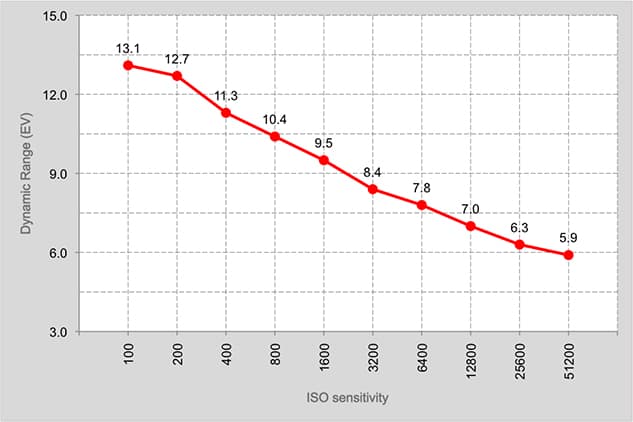
Fujifilm X-T2 dynamic range
Resolution
The level of detail recorded by the new 24MP sensor is a noticeable improvement on the X-T1. It resolves a maximum of 3,400l/ph between ISO 100 and ISO 400, much like the X-Pro2, with resolution dropping ever so slightly at ISO 800 to 3,200l/ph. The way the X-T2’s sensor resolves detail at higher ISO’s is remarkably impressive, and at ISO 3,200 and 6,400 the level of detail exceeds 3,000l/ph. The detail resolved at ISO 12,800 (2,800l/ph) remains high, and the sensor even manages to resolve 2,400l/ph when shooting in the expanded ISO 51,200 setting.
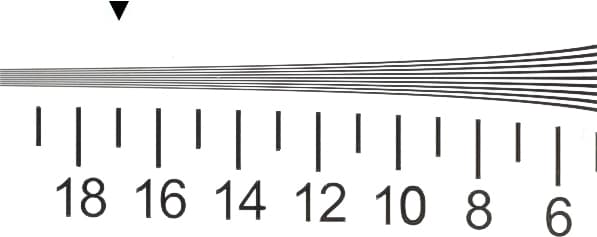
Fujifilm X-T2 Raw ISO 100
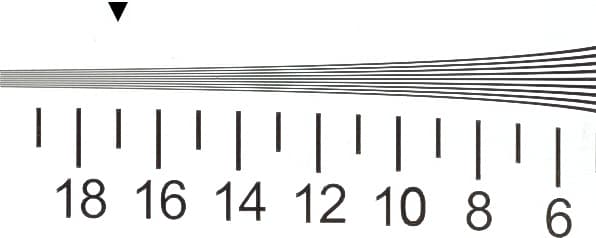
Fujifilm X-T2 Raw ISO 200
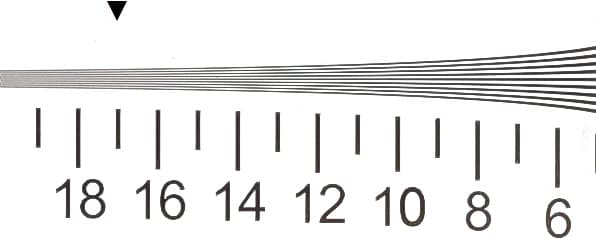
Fujifilm X-T2 Raw ISO 400
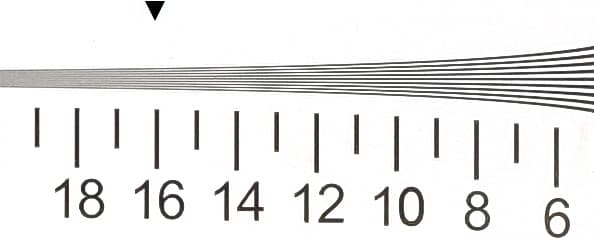
Fujifilm X-T2 Raw ISO 800
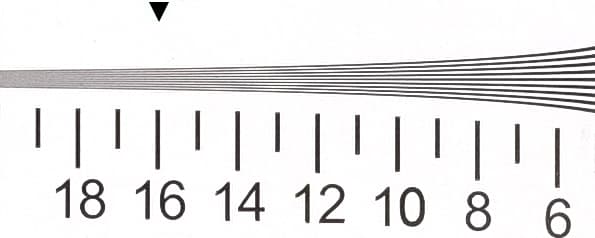
Fujifilm X-T2 Raw ISO 1600
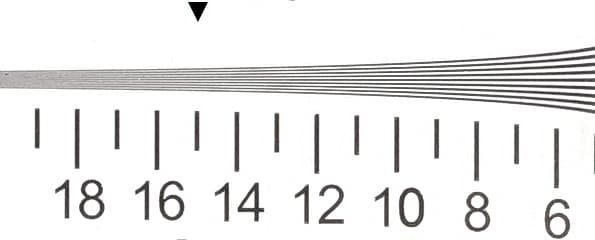
Fujifilm X-T2 Raw ISO 3200
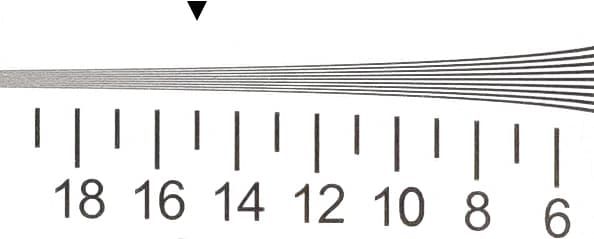
Fujifilm X-T2 Raw ISO 6400
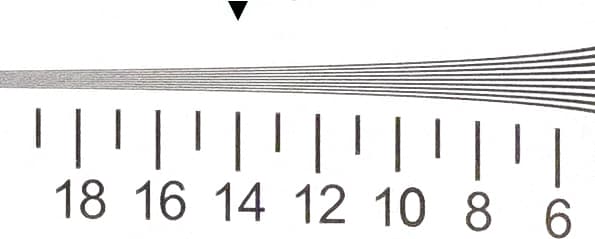
Fujifilm X-T2 Raw ISO 12800
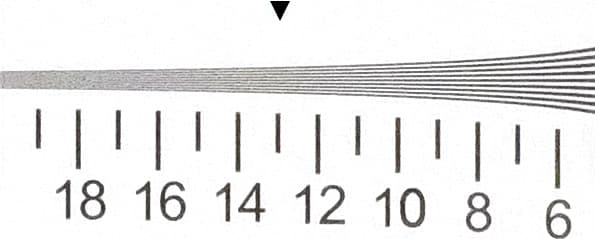
Fujifilm X-T2 Raw ISO 25600
Noise
A close inspection of our diorama test images displayed exceptionally clean results with barely any trace of luminance noise between ISO 100 and ISO 800. At ISO 1,600 you can just make out luminance noise starting to creep in, but it’s not a major concern and you won’t notice it unless you go searching for it at close magnification. Luminance noise starts becoming more apparent in images at ISO 3,200 and 6,400; however with a touch of noise reduction applied there’s nothing that should stop you pushing to these sensitivities if a low-light shooting opportunity presents itself. Rotating the ISO dial to ISO 12,800 introduces more luminance noise, but the level of fine detail that’s recorded remains high. I certainly wouldn’t hold back from using this setting if needed, but it would require some vigilant application of noise reduction in post. Users could turn to the expanded ISO 25,600 setting in emergencies, but ISO 51,200 should be avoided as there’s a big drop in saturation.
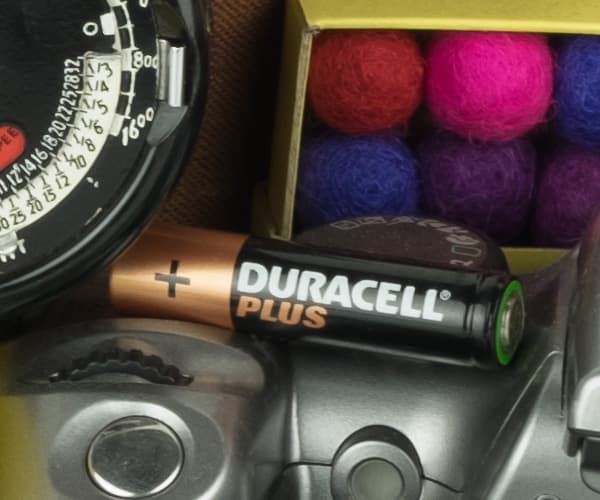
Fujifilm X-T2 Raw ISO 100
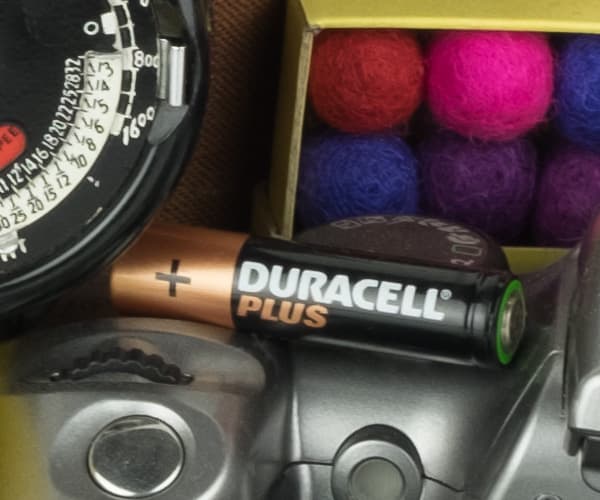
Fujifilm X-T2 Raw ISO 200
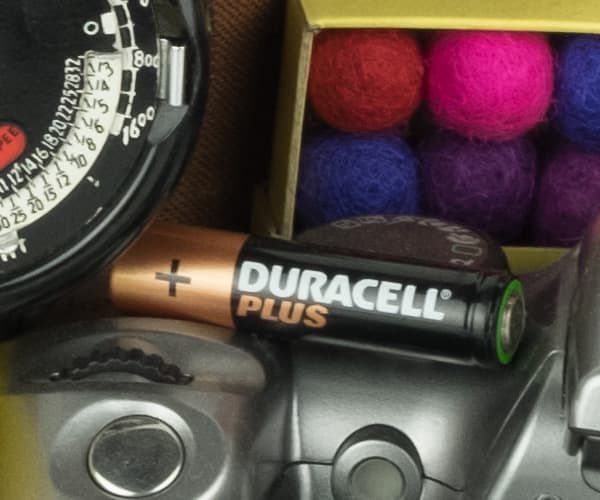
Fujifilm X-T2 Raw ISO 400
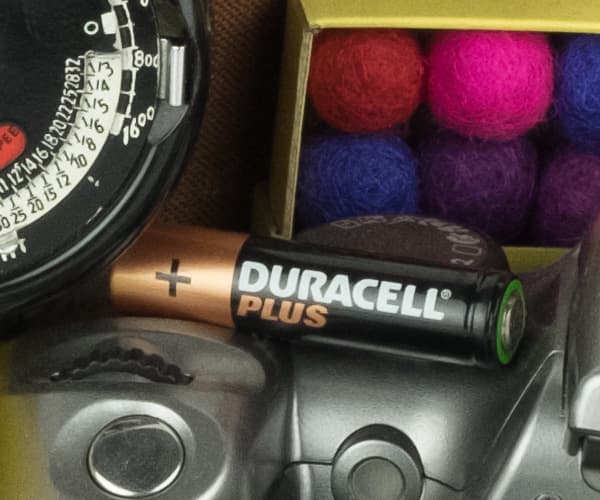
Fujifilm X-T2 Raw ISO 800
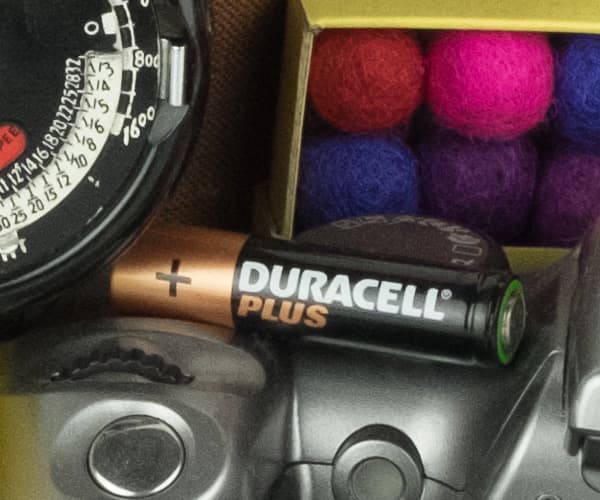
Fujifilm X-T2 Raw ISO 1600
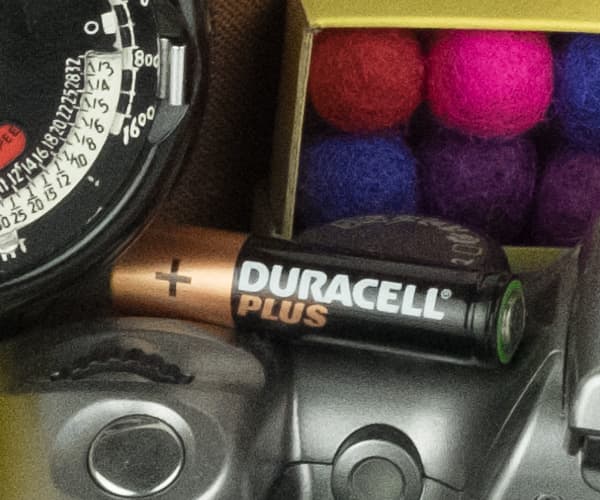
Fujifilm X-T2 Raw ISO 3200
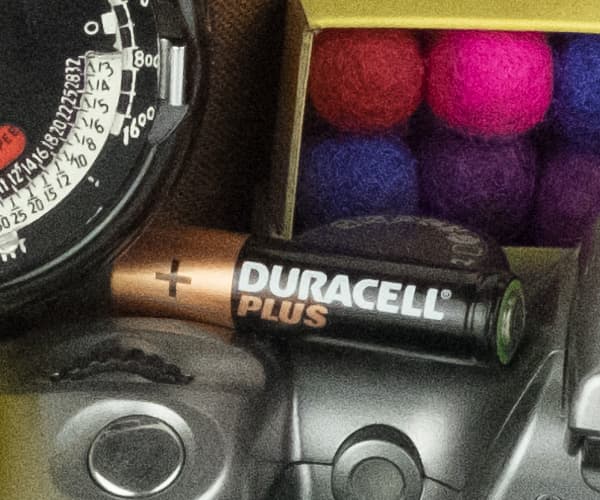
Fujifilm X-T2 Raw ISO 6400
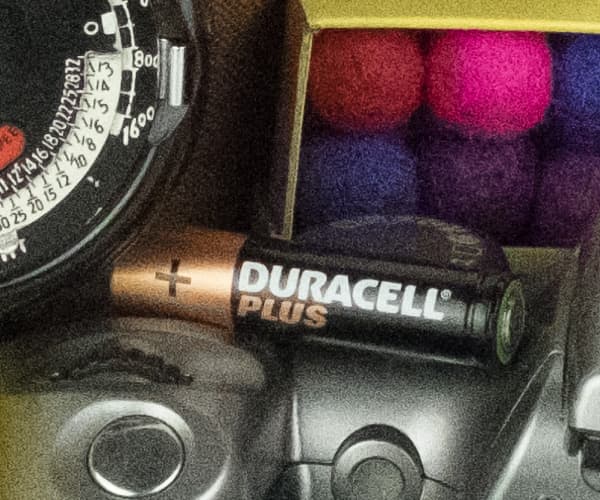
Fujifilm X-T2 Raw ISO 12800
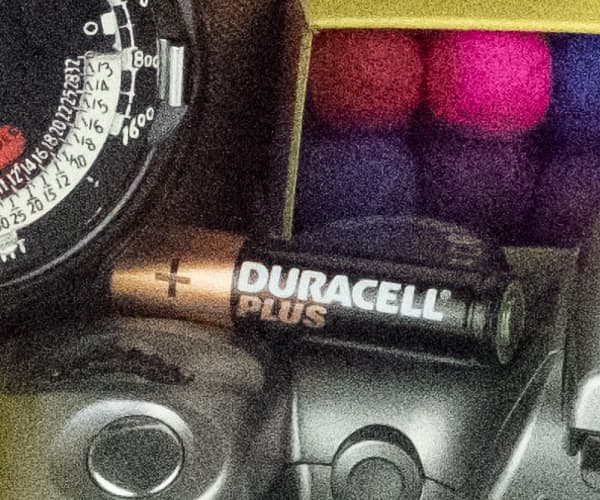
Fujifilm X-T2 Raw ISO 25600
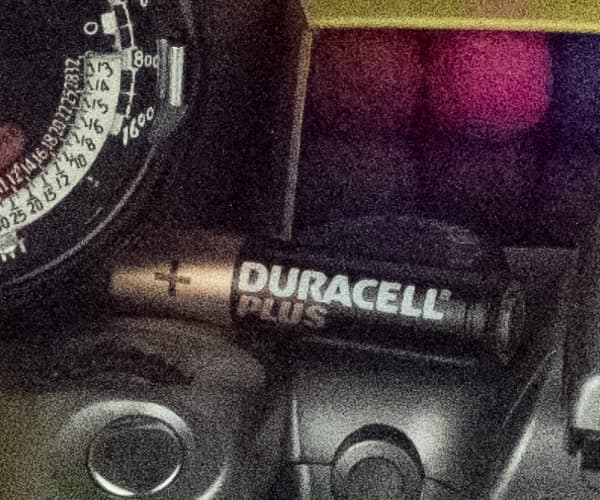
Fujifilm X-T2 Raw ISO 51200
Fujifilm X-T2 review: Verdict
When we reviewed the X-T1 in 2014, we concluded by saying it was one of the finest premium compact system cameras we’d ever tested. We instantly fell in love with its chic styling and DSLR-like layout of buttons and dials. However, we always felt there was room for improvement with regard to battery life, AF speed and general all-round performance. Fujifilm has taken the feedback from the X-T1 onboard and ensured the X-T2 isn’t just a minor update on what we’ve seen before but a revolutionary one.

The X-T2 with the vertical power grip (VPB-XT2) attached
Ripping out the guts of the X-T1 and implementing the same sensor and processor technology from the X-Pro2 has rejuvenated the X-T2 as a speed demon that’s now capable of keeping up with the fastest of moving subjects. Its agile AF response is in a different league to that of the X-T1 and when it’s combined with the power booster grip the all-round performance receives an extra injection of speed. The power booster grip is an essential accessory. Not only does it answer battery life concerns, it allows you to shoot up to 14fps – speeds that are typically associated with flagship DSLRs like the Canon EOS 1D X Mark II, which come with monumental expense.

AP’s Michael Topham tries out the X-T2’s new tilting screen mechanism for portrait shooting
Other additions such as the new tilting-screen mechanism, revised menu system, dual card slots and improved weather resistance are very welcome, but ultimately it’s the detail; response at high ISO sensitivities; and the rich, vibrant colours that make the X-T2 images as good as they are. Those who have been patiently waiting for one of the best all-rounder substitutes for a more cumbersome DSLR may just have found their perfect partner in the X-T2.
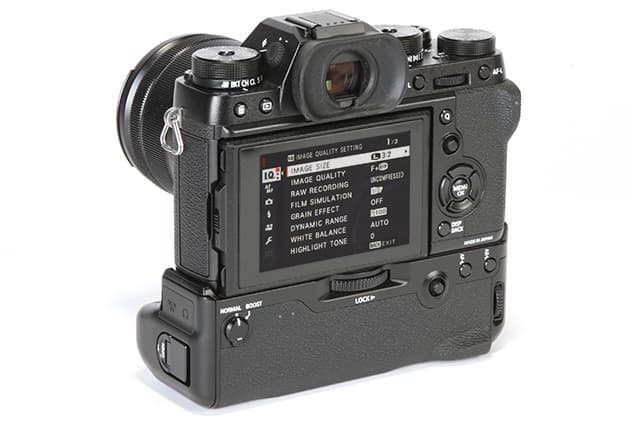
The X-T2’s menu interface has been freshened up and is now easier and clearer to navigate
To sum up, all the things we loved about the X-T1’s classic and nostalgic retro charm have been kept and nearly every improvement we’ve been longing for has been introduced. I say nearly because I’d still like to see ISO control added to the quick menu, or better still, have the option to hold a function button and adjust ISO on the fly without having to pull my left hand away from supporting a lens. Apart from these, the X-T2 is a dream camera. It’s the most appealing model in the X-series to date and will certainly change people’s perception of speed associated with mirrorless cameras.


